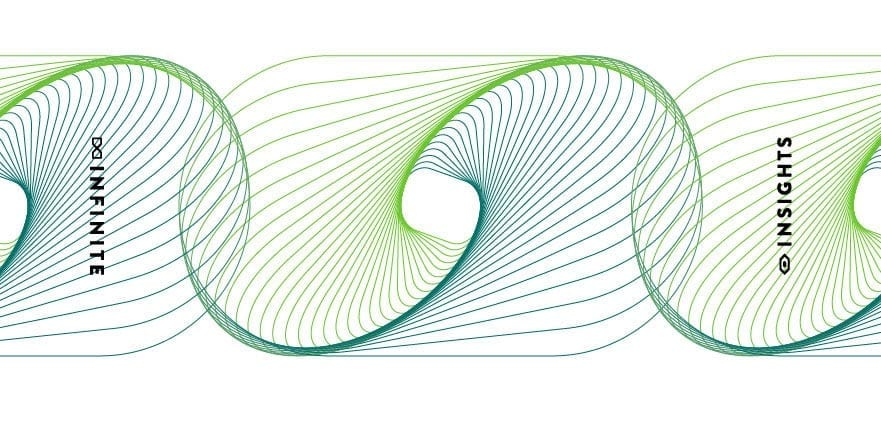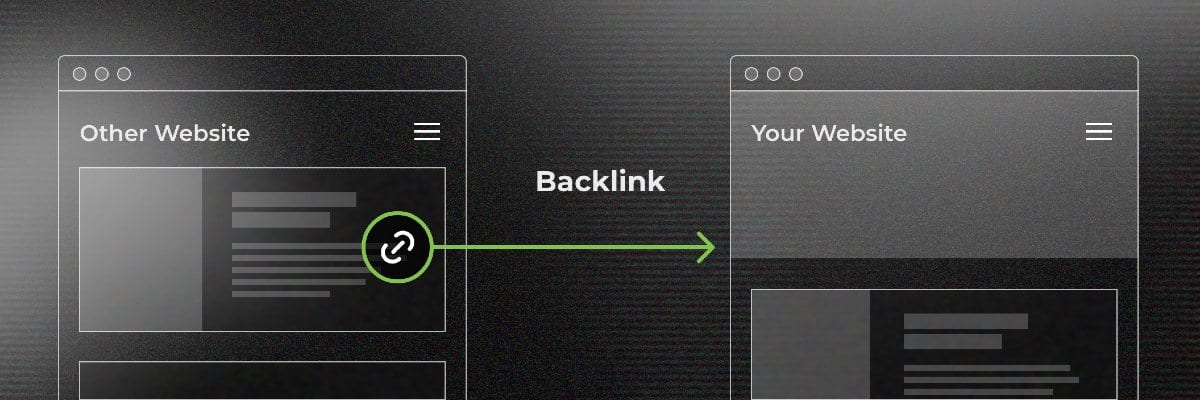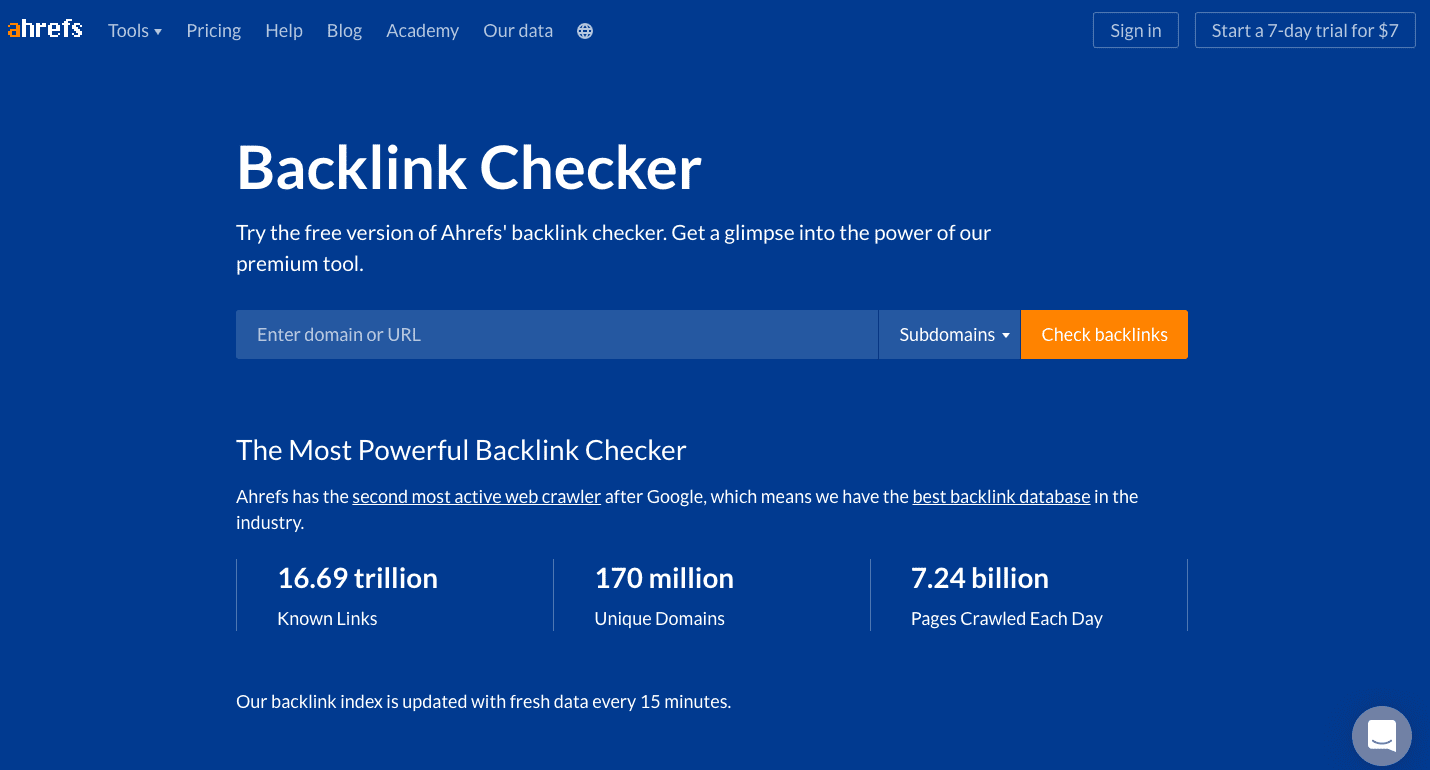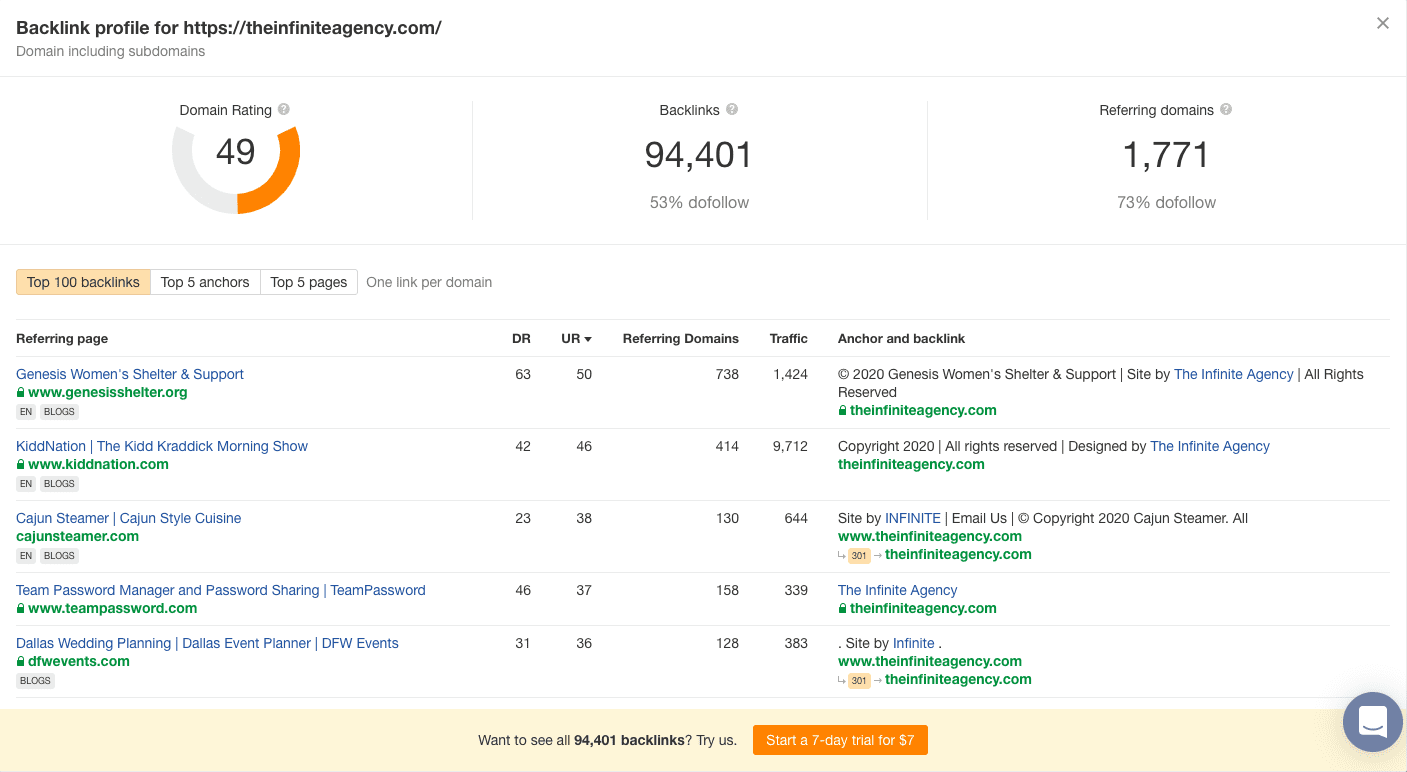What are backlinks? Tips for link building the right way.
You might already know that Google’s algorithm uses backlinks as one of its top ranking factors, but… What the heck...
Read More »
You might already know that Google’s algorithm uses backlinks as one of its top ranking factors, but…
What the heck are they?
And how do I get more for my website?
Do they even matter?
While traditional SEO tactics such as conducting keyword research, structuring content, developing an internal linking strategy, implementing mobile-friendly pages, and penning quality content are still recommended, if you’re not focusing on obtaining backlinks, you’re already behind the curve.
This article will give actionable tips and tools to obtain high-quality backlinks for your brand.

Back-linking, also known as inbound links or link building, is the practice of obtaining one-way links from external websites to your website with the ultimate goal of improving the organic search rankings for your site.
Although Google has never publicly addressed backlinks as a key ranking factor, several industry leaders have demonstrated a strong correlation between the number of backlinks and overall keyword rankings.
Backlinks are an indicator of trust from one site to another, and signal to search engines that a particular page’s content is noteworthy.
Also leading to this conclusion is unlike other SEO tactics which can be manipulated, such as keyword stuffing or cloaking, backlinks take much more time and effort to obtain. You’d be hard-pressed to get several backlinks quickly from say The New York Times or Wikipedia, making it tougher to cheat the system.
Not all backlinks carry equal weight in the eyes of search engines.
Backlinks should come from a diverse range of high-quality sites. Links should be contained within the article body copy versus the footer or header. Only ‘dofollow’ links provide SEO benefits. And linking anchor text should have relevant keywords to your business.
Links from .gov, .edu, or .org are seen as more trustworthy than .com sites, offering more ranking benefits to the receiving site.
Some publications and blogs may denote their links as “no follow” which don’t carry any link juice to your website.
Lastly, backlinks that are present in the menu navigation, sidebar, or footer, will not carry as much weight as links in the body paragraphs.
The favorite backlink checker tool among advertising agencies is Ahrefs, although Moz and SEMRush offer this service as well.
We prefer Ahrefs for its suite of tools and metrics including current and historical backlinks, number of referring domains, linking anchor text, broken backlink checker, and keyword tracking.

For those with a limited budget, Ahrefs even offers a free backlink checker with most of its core features included. To see how your website stacks up, simply paste your link in the search bar and hit “check backlinks”. It’s that easy – no credit card or sign-up required.
For a more detailed breakdown, check out this handy backlink audit guide by Respona.

You’ll notice the results are broken up into three categories: Domain Rating, Overall Backlinks, and Referring Domains.
Domain Authority (DA), is a metric developed by Moz and Ahrefs. Domain Authority is a way of telling how well a website SHOULD rank, using a 0-100 point scale. Theoretically, the higher the domain authority score the better chance your website has to rank in search results.
DA is based on hundreds of different factors, many of which are still undisclosed by Moz and Ahrefs. We DO know that a significant weight of their scores is generated from overall backlinks and the quality of referring backlinks.
One caveat to point out for clients is that DA is NOT a metric used by Google to determine page rankings. DA is best used as a comparison tool to give you a rough estimate of how you stack against competitors. We’ve often seen competitors with higher domain authorities have worse rankings.
Here are 4 common back-linking strategies we use for our clients to acquire links from high authority websites.
Ensuring your business has the right naming convention, phone number, services, and business information across third-party sites further solidify your credibility with Google, along with increasing discoverability and local SEO.
We recommend using a tool such as Yext or WhiteSpark to quickly check if your information is consistent and clean up your business across hundreds of sites. Otherwise, you will have to claim them individually, one by one.
If citation tools are too costly, we recommend focusing on three key sites: Facebook, Google My Business (GMB), and Apple Maps. Take the time to claim all of your listings or create new ones if one does not exist.
Your most important online citation is your Google My Business account. Be sure to fill out your Google My Business listings as much as you can, including pictures, services, positive reviews, and links to local web pages if possible.
If your business is fortunate enough to have an in-house public relations department, we recommend drafting press releases to push your content and services to publications and news stations with high domain authority. We’ve found this approach is best used sparingly and for quality content, such as eBooks, guides, infographics, photography, or videos.
If you don’t have access to a PR team, you can do email outreach to publications and webmasters. Email outreach tools like Hunter can be used to find real email addresses for just about any website.
Here’s a handy press release template to help you get started.
Guest blogging on sites with higher authority than your own is a great way to introduce your brand to a different audience while receiving a high-quality link.
Best of all everybody wins. They get great quality content and increased keyword rankings while you get a new backlink.
Clients and peers can be a great resource for guest blogging opportunities, just remember to provide value in your post and link to similar content on your site.
Content marketing is a great way to build relationships between current and future customers. While content comes in all shapes and sizes, we’ve found that certain formats are shared more frequently. Blogs that include infographics, first-party research, eBooks, in-depth guides, FAQs, or interviews are more likely to generate backlinks from high-quality sites.
Remember that publications have stricter requirements for linking to sites than bloggers, so ensure your content has links to other high-quality sources, remains unbiased, and fully covers a single topic.
Google does offer a disavow tool for webmasters but warns that misuse of this tool can negatively impact search rankings. Google has repeatedly said the only links you should ever disavow are paid links. Most sites will acquire low-quality links at some point or another and Google largely knows which to ignore.
Infinite has helped hundreds of brands grow their digital presence and reach KPI goals. We drive brand growth through data-driven insights, inspiring creativity, and connected experiences. We’ve helped build brand portfolios for Anheuser-Busch (Bud Light, Budweiser, Michelob, and others), ESPN, Smoothie King, TopGolf, Vari, Service King, Gold’s Gym, On The Border, Twin Peaks, Pizza Hut, FanDuel, and Caesar’s Entertainment.